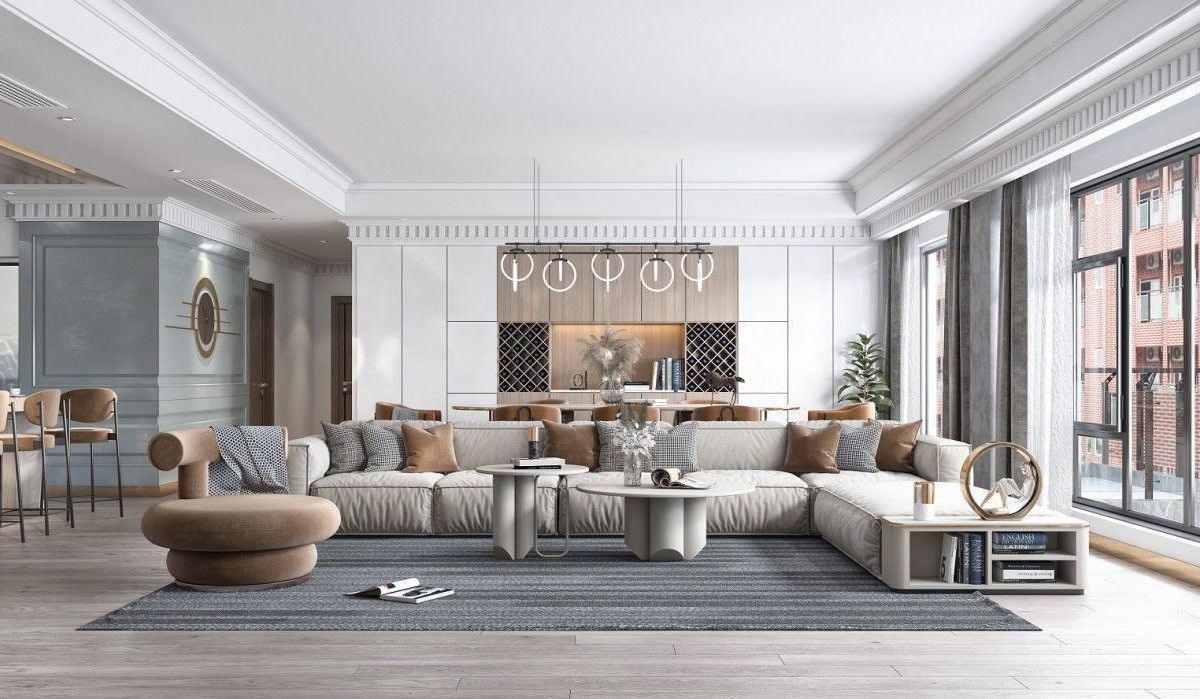Interior Rendering: Bringing Designs to Life

In today’s visually driven world, high-quality imagery is no longer optional, it’s a necessity. Whether you’re an e-commerce brand showcasing products, an architect designing a new space, or a marketing agency crafting immersive campaigns, the way you present your ideas can make or break engagement. Traditional photography has long been the go-to solution, but it comes with limitations: high costs, time constraints, and a lack of flexibility in post-production. Enter interior rendering, a game-changing technology that bridges the gap between imagination and reality.
What is Interior Rendering?
Interior rendering is the process of creating photorealistic 3D images of indoor spaces using CGI (Computer-Generated Imagery). Unlike traditional photography, which requires physical setups, lighting adjustments, and expensive studio sessions, rendering allows you to create, modify, and perfect visualizations digitally. From architectural interiors to product placements within a space, CGI rendering offers limitless creative possibilities.
The Problem: Why Traditional Visuals No Longer Cut It
Businesses today face several challenges when it comes to producing high-quality visual content:
- Cost and Time-Intensive Photography: Professional photoshoots require expensive equipment, props, and venue rentals, often leading to long production times and high costs.
- Limited Flexibility: Once a product or space is photographed, making changes such as altering colors, layouts, or lighting is difficult and may require a complete reshoot.
- Inconsistent Results: Factors like weather, lighting conditions, and human errors can affect the outcome, leading to images that may not be as polished as desired.
- Lack of Immersion: In industries like architecture and real estate, static images fail to capture the full experience of a space, making it harder to convey design intent to clients and investors.

The Solution: How Interior Rendering Changes the Game
Incubid, a leading CGI and visualization service provider, leverages advanced 3D technology to create stunning interior renderings. Here’s how it solves the biggest pain points in visual content creation:
1. Cost-effective and Scalable
Unlike traditional photography, which requires physical setups for each shoot, 3D rendering is entirely digital. This eliminates costs associated with location rentals, props, and photography equipment. Once a 3D model is created, it can be repurposed across different marketing materials, making it a highly scalable solution.
2. Ultimate Flexibility and Customization
With CGI, every detail, lighting, textures, furniture placement, and even décor can be customized at any stage. Need a different color scheme? Want to test different furniture layouts? These changes can be made instantly without the need for a new photoshoot.
3. Hyper-Realistic Visuals for Stronger Engagement
Modern 3D rendering technology allows for an unmatched level of realism. Textures, shadows, reflections, and even natural lighting effects are replicated with precision, making it difficult to distinguish a rendered image from a real photograph.
4. Immersive Experiences for Better Decision-Making
For architects and real estate developers, static images don’t always communicate the full experience of a space. With interactive 3D renders, clients can take virtual tours, experience different lighting scenarios, and even view future developments before construction begins.
5. Faster Production Time for Market-Readiness
Time is money, and CGI rendering accelerates the creative process. A traditional photo shoot may take weeks of planning and execution, whereas a digital rendering can be completed in days, allowing businesses to launch campaigns faster.
Industries Benefiting from Interior Rendering
1. E-commerce and Product Visualization
Brands selling home decor, furniture, and appliances can showcase products in beautifully staged, digitally created interiors, giving customers a real sense of how items will look in their homes.
2. Architecture and Real Estate
Architects and property developers use interior rendering to present unbuilt spaces to clients, investors, and buyers. This helps secure funding and pre-sales by offering a clear visual representation of future projects.
3. Marketing and Advertising Agencies
CGI-generated interiors are used in high-end marketing campaigns, enabling brands to create dream-like settings that might be impossible to achieve in real life.
Practical Tips for Using Interior Rendering Effectively
- Ensure High-Quality Textures: The more realistic the materials and textures, the more convincing the render will be.
- Focus on Lighting: Just like in real photography, lighting plays a key role in setting the mood and realism of a render.
- Keep It Minimalistic: A cluttered render can be overwhelming; instead, focus on key elements that enhance the visual story.
- Choose the Right Angles: Experiment with different camera angles to highlight the best aspects of the space or product.

Conclusion: The Future of Visual Storytelling
Interior rendering is more than just a tool – it’s a revolution in visual content creation. Whether you’re an e-commerce brand looking for high-quality product visuals, a designer needing realistic previews, or a real estate developer showcasing luxury spaces, CGI rendering opens up a world of possibilities. By embracing this technology, businesses can enhance their marketing efforts, reduce costs, and deliver stunning visuals that captivate and inspire.
Want to see how photorealistic interior rendering can elevate your brand? Explore Incubid’s CGI and visualization services today!